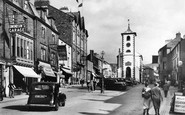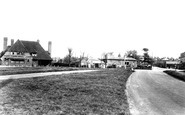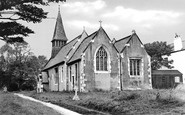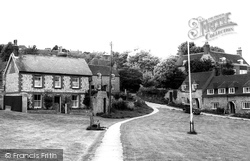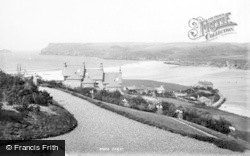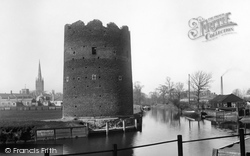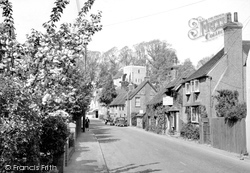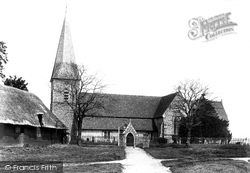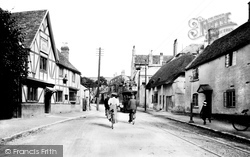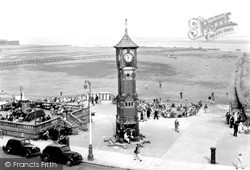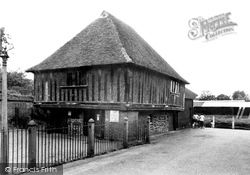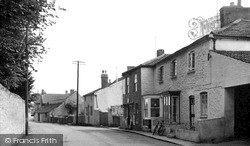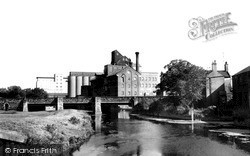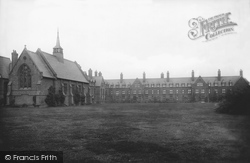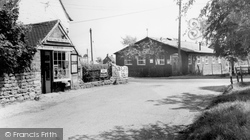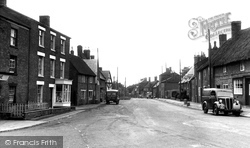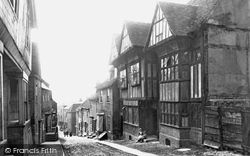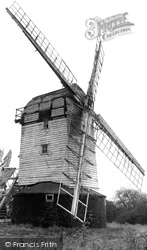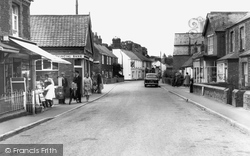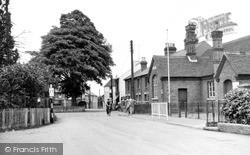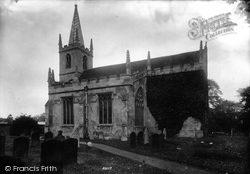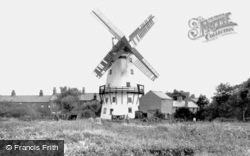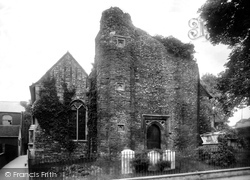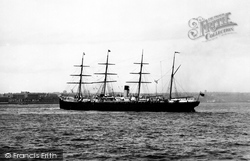Places
Sorry, no places were found that related to your search.
Photos
Sorry, no photos were found that related to your search.
Maps
Sorry, no maps were found that related to your search.
Books
Sorry, no books were found that related to your search.
Memories
655 memories found. Showing results 91 to 100.
Salford Childhood Memories
When the Beatles took off in the early sixties, me and my friends couldn't believe it in those dark rainy school days mornings, something to brighten them up, so we used to pretend to be the Beatles. I was John Lennon. ...Read more
A memory of Salford in 1964 by
Fordington
Fordington has changed a lot over the years in that there has been much infilling with houses. At the top of Pound Lane was Moule's Coffee Tavern which was used as a hall and a community space. Nearly opposite over the High Street, ...Read more
A memory of Fordington Down in 1964
Royal Oak Hotel / George Hotel
In 1964 I was (as Jim Wright) fortunate enough to move to Keswick to work as the assistant manager at the then Royal Oak Hotel, just past the Moot Hall on the far left corner in this photograph. The Royal Oak and George ...Read more
A memory of Keswick in 1964 by
School Days
I remember my first day at Crown Lane Primary School, Crown Point, West Norwood. My mum walked me to school and we all went in with the other children, most of whom I knew from our estate. My mum gave me threepence for my dinner money ...Read more
A memory of West Norwood in 1964
Schools In Bulwell 1964 To 1974
Born in Bulwell in 1959. I remember initially going to Cantrall Road school which was really nice. I remember Mrs Hare the headmistress, Mr Anderson and Mr Richy. I liked the latter but not Mr Anderson as he wiped ...Read more
A memory of Bulwell in 1964 by
Greyhound, Fox & Central Garage
This photo has the 3 places that were a big part of my early working life. I worked in the garage from 63 through 69, the owner was Charles Holland who lived next door, we used the fox pub most evenings & weekends and ...Read more
A memory of Keston in 1963 by
My Love Of Brynowen Continues
I do not remember my first visit to Borth as I would have been a few months old around about the spring of 1963. As a family we then returned every year staying at Brynowen, sometimes twice a year, until I turned 18 at the ...Read more
A memory of Borth in 1963 by
Lawrence Weston Comprehensive School
I attended Lawrence Weston Comprehensive School from September 6, 1963 until February 1969. Although I had passed my 11 Plus examination very highly (highest in the southwest of England) and wanted to go ...Read more
A memory of Lawrence Weston in 1963 by
My Youth In Thornley
I was born at 128 Thornlaw, North Thornley. I am one of 8 children. My perants where Mr & Mrs Coles, Mary Ellen & Eric. My brother's names, Eric, Charles, Lawrance and Joseph. Sisters are Margaret, Mary, Pauline and ...Read more
A memory of Thornley in 1963 by
My Wedding
I was married in St Leonards and St Marys Church, Armthorpe, on 26 December 1963. My husband was Reg Ford from Balby. We worked together at Peglers Ltd, Brassfounders, Balby. We emigated to New Zealnd in 1965, through the Peglers ...Read more
A memory of Armthorpe in 1963 by
Captions
405 captions found. Showing results 217 to 240.
The Village Green c1955.
Hayle Bay, with its lines of evenly-breaking surf and golden sand, is now a mecca for surfers and tourists, and New Polzeath has grown along the low cliffs on the opposite side of the beach.
Cow Tower was built on the River Wensum in 1378 as a boom tower, controlling the flow of river traffic at the point where the city wall ended.
The houses of Bramber are varied and picturesque. Some are built of brick or flint, and some are creeper-clad. The village was once an important port on the River Adur.
This fine Early English church, set back from the village and behind a narrow green, boasts a raised 13th-century chancel and a tapering, shingled broach spire.
Reputedly England's most haunted village, and a market town in the time of Henry III, Prestbury is now a residential suburb of Cheltenham.
The marked two colours of brick are not so easy to distinguish fifty years on from our earlier photographs. The ornate clock tower was a gift to the town in 1905 from Alderman J R Birkett.
Now a National Trust property and open as a museum, this stone, brick and timber building is said to be the smallest town hall in Britain.
Puriton's brick and tile industry has now gone, but Middle Street is much the same today. Biggs' general store (right), now the post office, sits here above Good's Farm.
Whitworth Brothers Flour Mills stand beside the A509 London Road bridge.
Cambridge's first women's college started out in Hitchin in 1869, and was moved to Girton three years later - sufficiently far removed from Cambridge and the temptations of its male students.
Cambridge's first women's college started out in Hitchin in 1869, and was moved to Girton three years later - sufficiently far removed from Cambridge and the temptations of its male students.
Bristol cigarettes and Brooke Bond tea could be purchased at the Post Office Stores, run by M S Beevers at the time of this photograph.
Some of the houses are built of brick, some of stone. The van parked on the left of the street is advertising Mackeson's stout.
Salisbury was founded in the 13th century: there was no earlier settlement here, consequently the wide streets were laid out on a grid pattern.
The old hospital (1576) on the right, so called since it performed that function during the Napoleonic Wars, forms the main subject of this early picture of the most photographed of Rye's cobbled
This mid 18th-century post mill has 'I Swan 1749', 'W Bedwell' and 'John Swan 1754' carved on the beams. The mill was restored in 1966-68.
Once a major ironworking centre, this village also boasts the first Fuggle hops to be grown.
This small village sits between the sea and fields of bright laven- der. At Caley Mill there is a lavender water distillery, and in late summer the fields shimmer with a deep blue.
Although actually very old, this is another Medway-side village that was left with a distinctly Victorian appearance by the 19th century building boom, when it was a source of brick earth and also chalk
Doddington receives many visitors, for Doddington Hall, although privately owned, is often open to the public.
Marsh Windmill is a large Fylde-type brick tower mill with four patent shuttered sails and a fantail. Dated 1794, it worked until 1922.
The late 17th-century tower with its liberal use of salvaged Roman brick fell in the 17th century.
He put money, new ships and new life into the company, and brought in the right partners and associates to found the successful business.
Places (0)
Photos (0)
Memories (655)
Books (0)
Maps (0)



